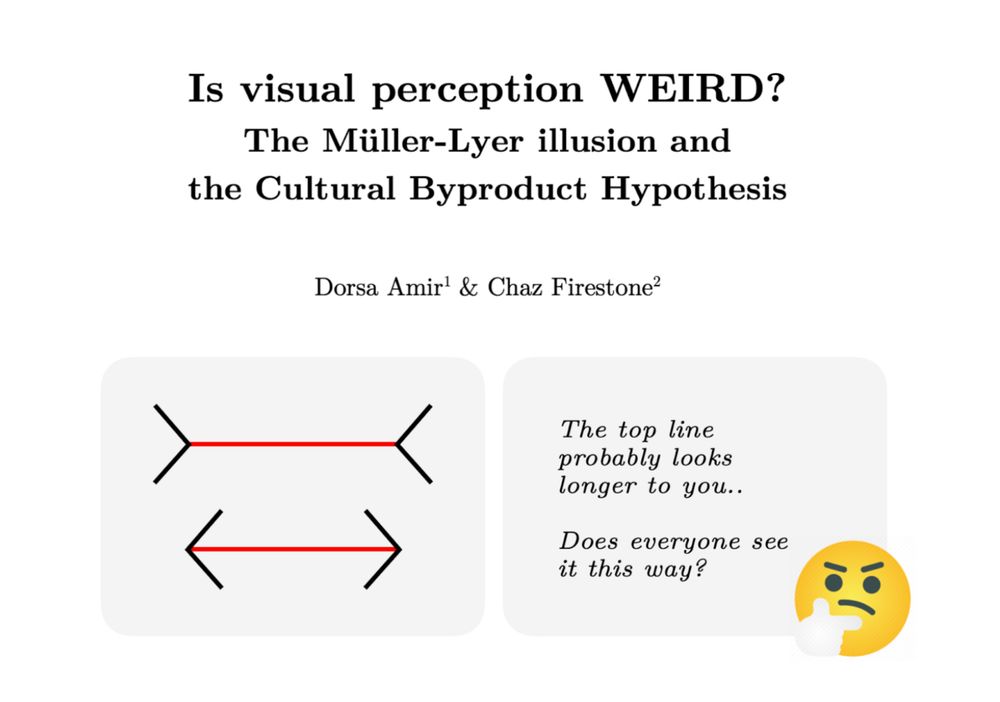Michelle Ramey
@michelleramey.bsky.social
85 followers
100 following
10 posts
Assistant professor studying episodic memory and how it interacts with visual attention, schemas, and aging (using eyetracking and computational modeling) | https://michellemramey.com/
Posts
Media
Videos
Starter Packs
Pinned
Michelle Ramey
@michelleramey.bsky.social
· May 24

Episodic memory and semantic knowledge interact to guide eye movements during visual search in scenes: Distinct effects of conscious and unconscious memory - Psychonomic Bulletin & Review
Episodic memory and semantic knowledge can each exert strong influences on visual attention when we search through real-world scenes. However, there is debate surrounding how they interact when both are present; specifically, results conflict as to whether memory consistently improves visual search when semantic knowledge is available to guide search. These conflicting results could be driven by distinct effects of different types of episodic memory, but this possibility has not been examined. To test this, we tracked participants’ eyes while they searched for objects in semantically congruent and incongruent locations within scenes during a study and test phase. In the test phase containing studied and new scenes, participants gave confidence-based recognition memory judgments that indexed different types of episodic memory (i.e., recollection, familiarity, unconscious memory) for the background scenes, then they searched for the target. We found that semantic knowledge consistently influenced both early and late eye movements, but the influence of memory depended on the type of memory involved. Recollection improved first saccade accuracy in terms of heading towards the target in both congruent and incongruent scenes. In contrast, unconscious memory gradually improved scanpath efficiency over the course of search, but only when semantic knowledge was relatively ineffective (i.e., incongruent scenes). Together, these findings indicate that episodic memory and semantic knowledge are rationally integrated to optimize attentional guidance, such that the most precise or effective forms of information available – which depends on the type of episodic memory available – are prioritized.
link.springer.com
Reposted by Michelle Ramey
Reposted by Michelle Ramey
Dominika Varga
@dkvarga.bsky.social
· Sep 4
Reposted by Michelle Ramey
Reposted by Michelle Ramey
Mariam Aly
@mariamaly.bsky.social
· Aug 25

Hippocampal mismatch signals are based on episodic memories and not schematic knowledge | PNAS
Prediction errors drive learning by signaling mismatches between expectations and
reality, but the neural systems supporting these computations rem...
www.pnas.org
Reposted by Michelle Ramey
Reposted by Michelle Ramey
Reposted by Michelle Ramey
Michelle Ramey
@michelleramey.bsky.social
· May 24
Michelle Ramey
@michelleramey.bsky.social
· May 24
Michelle Ramey
@michelleramey.bsky.social
· May 24
Michelle Ramey
@michelleramey.bsky.social
· May 24
Michelle Ramey
@michelleramey.bsky.social
· May 24

Episodic memory and semantic knowledge interact to guide eye movements during visual search in scenes: Distinct effects of conscious and unconscious memory - Psychonomic Bulletin & Review
Episodic memory and semantic knowledge can each exert strong influences on visual attention when we search through real-world scenes. However, there is debate surrounding how they interact when both are present; specifically, results conflict as to whether memory consistently improves visual search when semantic knowledge is available to guide search. These conflicting results could be driven by distinct effects of different types of episodic memory, but this possibility has not been examined. To test this, we tracked participants’ eyes while they searched for objects in semantically congruent and incongruent locations within scenes during a study and test phase. In the test phase containing studied and new scenes, participants gave confidence-based recognition memory judgments that indexed different types of episodic memory (i.e., recollection, familiarity, unconscious memory) for the background scenes, then they searched for the target. We found that semantic knowledge consistently influenced both early and late eye movements, but the influence of memory depended on the type of memory involved. Recollection improved first saccade accuracy in terms of heading towards the target in both congruent and incongruent scenes. In contrast, unconscious memory gradually improved scanpath efficiency over the course of search, but only when semantic knowledge was relatively ineffective (i.e., incongruent scenes). Together, these findings indicate that episodic memory and semantic knowledge are rationally integrated to optimize attentional guidance, such that the most precise or effective forms of information available – which depends on the type of episodic memory available – are prioritized.
link.springer.com
Reposted by Michelle Ramey









